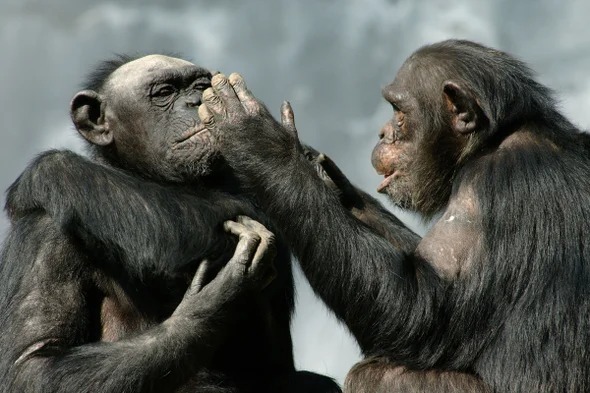Humans recognize the “signs” or gestures used by wild chimps and bonobos to communicate with one another.
This was the finding of a video-based study in which volunteers translated ape motions. It was conducted by St Andrews University researchers.
It implies that our last common ancestor with chimps utilized comparable gestures, which served as a “beginning point” for our language.
The findings have been published in the peer-reviewed journal PLOS Biology.
“We know that all the great apes – chimps and bonobos – have an overlap of roughly 95% of the gestures they employ to communicate,” said lead researcher Dr Kirsty Graham of St Andrews University.
“So we already had a suspicion that this was a shared gesturing ability that might have been present in our last shared ancestor. But we’re quite confident now that our ancestors would have started off gesturing, and that this was co-opted into language.”
This work was part of an ongoing scientific mission to better understand the origins of language by closely investigating communication in our closest ape ancestors.
This study team has spent many years observing wild chimps. They previously established that great apes had a “lexicon” comprising over 80 gestures, each of which conveys a message to another member of their group.
A protracted scratching motion conveys messages such as “groom me,” a mouth stroke conveys “give me that food,” and pulling strips from a leaf with teeth is a chimp seduction gesture.
Translating apes
The researchers employed video playback tests since that is how nonhuman primates have typically been tested for language comprehension. They flipped the approach on its head in this study to examine humans’ capacity to understand the motions of their closest living ape relatives.
Volunteers saw footage of chimps and bonobos gesticulating and then chose from a list of translations.
The participants did substantially better than chance would have predicted, properly comprehending the meaning of chimp and bonobo gestures more than half of the time.
“We were really surprised by the results,” said Dr Catherine Hobaiter from St Andrews University. “It turns out we can all do it almost instinctively, which is both fascinating from an evolution of communication perspective and really quite annoying as a scientist who spent years training how to do it,” she joked.
The gestures people can innately understand may form part of what Dr Graham described as “an evolutionarily ancient, shared gesture vocabulary across all great ape species including us”.









